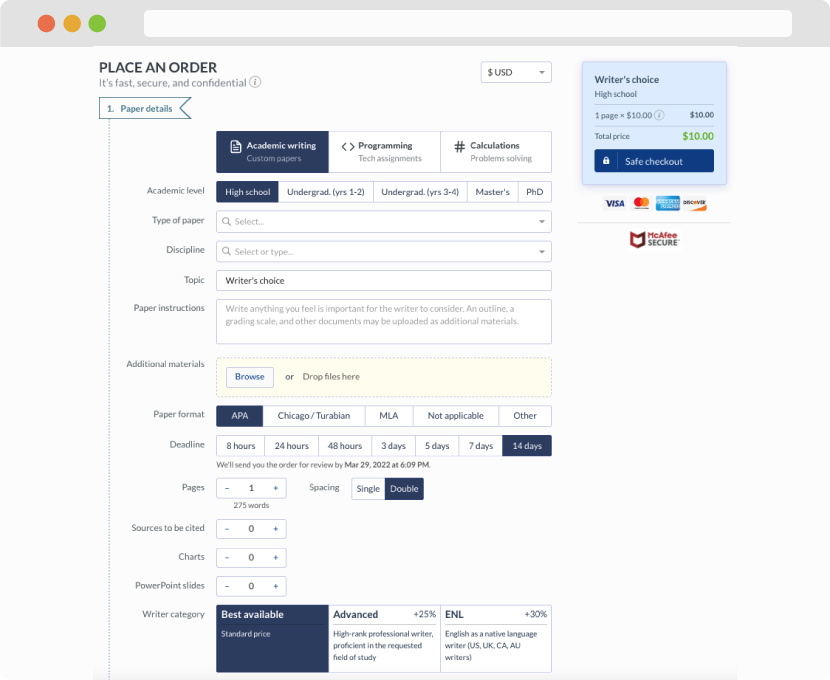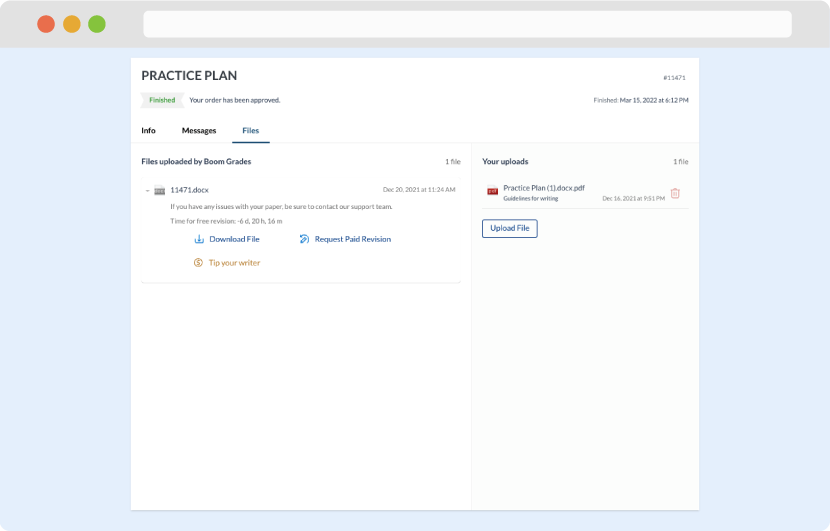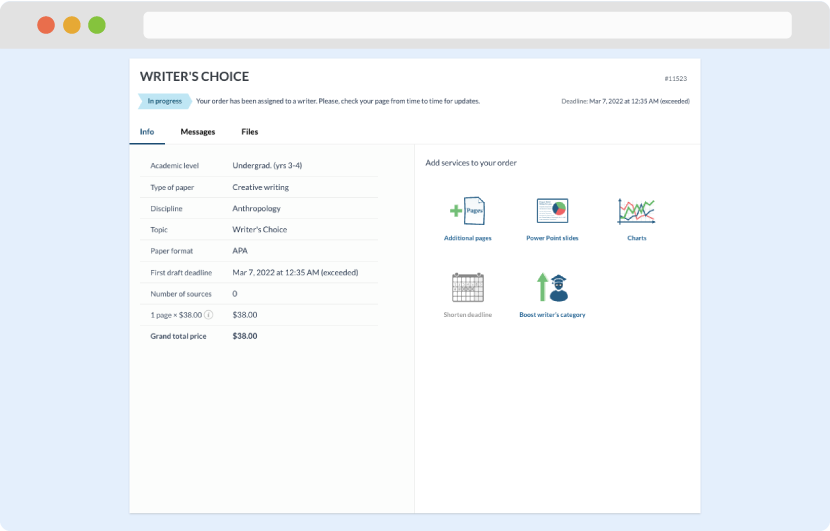This assignment focuses on synthesizing the literature from your Annotated Bibliography for each of your three subtopics. You will analyze the key findings from your sources, identify patterns or debates, and provide transitions that connect your subtopics cohesively. This step will help you build a strong foundation for your final Capstone Research Paper.
Outline Structure:
Your outline should include the following sections and elements:
Use the sources you identified in your Annotated Bibliography.
Synthesize key findings and ideas from your sources, highlighting patterns, agreements, or disagreements in the literature.
Provide a transition and make a clear connection to the next subtopic.
Follow the same instructions as Subtopic 1, focusing on the second theme.
Follow the same structure as Subtopic 1, focusing on the second theme.
Include Sources:
2
March for Our Lives and Gun Control Legislation
Choumana Augustin
FIU
CCJ4497
Rosa Chang, Ph.D.
03/23/25
Annotated Bibliography
Jensen, K. (2023). “Our Pain Makes Us Family”: March For Our Lives and the constitutive role of gun violence trauma in youth publics.
Communication and the Public,
8(4). https://doi.org/10.1177/20570473231186839
This source examines the March For Our Lives rally and how shared gun violence trauma helped youth establish a broad political alliance. The article addresses youth activism and political participation in gun violence prevention. It demonstrates how collective trauma affects public discourse and policy demands and how personal gun violence experiences mobilize young people into activism.
Stone, E. M., Barry, C. L., Crifasi, C. K., Webster, D. W., Vernick, J. S., & McGinty, E. E. (2020). Support for gun policies among young adults in the U.S., 2017–2019.
Preventive Medicine,
135, 106094. https://doi.org/10.1016/j.ypmed.2020.106094
This study examines young adults’ attitudes toward gun policies before and after the Parkland shooting, showing their generally lower support for firearm regulations compared to older adults. It covers generational gun policy changes and significant shootings’ impact on public opinion. The research demonstrates that young individuals do not support severe weapons restrictions despite direct experience with gun violence, underlining the complexities of adolescent political involvement.
Samuels, J. T. (2020). Interest-driven sociopolitical youth engagement: Art and gun violence prevention.
Journal of Media Literacy Education,
12(2), 80–92. https://doi.org/10.23860/jmle-2020-12-2-7
The National Youth Art Movement Against Gun Violence is used to illustrate how youth utilize art and media to fight gun violence. It covers creative action and alternative political involvement among youth. The study suggests that public art and digital media can facilitate youth-led social change and policy conversations.
Pallin, R., Aubel, A. J., Knoepke, C. E., Pear, V. A., Wintemute, G. J., & Kravitz-Wirtz, N. (2021). News media coverage of extreme risk protection order policies surrounding the Parkland shooting: a mixed-methods analysis.
BMC Public Health,
21(1), 1–13. https://doi.org/10.1186/s12889-021-11909-z
This study examines media coverage of extreme risk protection orders (ERPOs) after the Parkland incident to demonstrate how mass shootings influence firearm policy. It applies to the subtopic of media effect on gun policy and popular views of firearm regulations. The findings support the argument that news framing influences gun violence legislation, boosting conversations on preventive measures like ERPO regulations.
Sato, Y., & Haselswerdt, J. (2022). Protest and state policy agendas: Marches and gun policy after Parkland.
Policy Studies Journal,
50(4). https://doi.org/10.1111/psj.12463
This research shows that pro-gun control marches promote state-level gun legislation. It applies to the subtopic of protest movements and their effectiveness in shaping firearm legislation. The study indicates that organized public demonstrations, especially following mass shootings, persuade politicians to pass or revise gun control laws, demonstrating the power of collective action.
Grene, K. L., Dharani, A. S., & Siegel, M. B. (2023). Gun violence prevention policy: Perceived and actual levels of gun owner support.
Preventive Medicine Reports,
35, 102324. https://doi.org/10.1016/j.pmedr.2023.102324
This study explores the discrepancy between gun owners’ actual and perceived support for firearm safety regulations, revealing that many favor policies they publicly oppose. It covers misperceptions in public opinion and how social norms shape policy arguments. The research suggests that gun owners may secretly favor gun control laws but publicly oppose them owing to social norms.
Grene, K., Amani Dharani, & Siegel, M. (2023). Gun owners’ assessment of gun safety policy: their underlying principles and detailed opinions.
Injury Epidemiology,
10(1). https://doi.org/10.1186/s40621-023-00430-z
This research examines gun owners’ support for firearm legislation and how different provisions affect them. It applies to the subtopic of policy design and public acceptance of gun regulations. The findings support the argument that effective firearm legislation should address gun owners’ complex concerns and that legislative success depends on addressing specific elements rather than assuming uniform opposition or support.
Dziobak, M. (2023). #NeverAgainMSD and the March for Our Lives Movement: American Youth for Gun Control.
Ad Americam,
24, 15–32. https://doi.org/10.12797/AdAmericam.24.2023.24.02
This article discusses the March for Our Lives campaign and its influence on gun reform after the Parkland tragedy. It addresses youth-led activism and social movements impacting firearm laws. The study shows that grassroots organizing may affect policy by shaping public discourse and legislative initiatives through youth-driven protests.
Shah, M. A., & Khan, Z. (2023). The Role of Youth Activism in Facilitating Social Change: A Catalyst for Transformation in the Contemporary Era.
Qlantic Journal of Social Sciences and Humanities,
4(4), 1–11. https://doi.org/10.55737/qjssh.575688089
This article examines how teenage activism has changed gun control, climate change, racial justice norms, politics, and laws. It relates to digital activism and how social media mobilizes young advocates for legislative reforms. The research shows that internet platforms increase young involvement in policymaking, giving activists a greater voice in calling for systemic change.
Ulrich, M. R. (2023). FOREWORD Finding Balance in the Fight Against Gun Violence.
The Journal of Law, Medicine & Ethics,
51(1), 7–13. https://doi.org/10.1017/jme.2023.37
This article covers rising U.S. firearm fatalities and legal impediments to gun control. It addresses firearm control and Second Amendment policy issues and legal controversies. The study shows that legal precedents like recent Supreme Court judgments impair gun violence prevention, showing the complicated link between constitutional rights and public safety.
References
Dziobak, M. (2023). #NeverAgainMSD and the March for Our Lives Movement: American Youth for Gun Control.
Ad Americam,
24, 15–32. https://doi.org/10.12797/AdAmericam.24.2023.24.02
Grene, K. L., Dharani, A. S., & Siegel, M. B. (2023). Gun violence prevention policy: Perceived and actual levels of gun owner support.
Preventive Medicine Reports,
35, 102324. https://doi.org/10.1016/j.pmedr.2023.102324
Grene, K., Amani Dharani, & Siegel, M. (2023). Gun owners’ assessment of gun safety policy: their underlying principles and detailed opinions.
Injury Epidemiology,
10(1). https://doi.org/10.1186/s40621-023-00430-z
Jensen, K. (2023). “Our Pain Makes Us Family”: March For Our Lives and the constitutive role of gun violence trauma in youth publics.
Communication and the Public,
8(4). https://doi.org/10.1177/20570473231186839
Pallin, R., Aubel, A. J., Knoepke, C. E., Pear, V. A., Wintemute, G. J., & Kravitz-Wirtz, N. (2021). News media coverage of extreme risk protection order policies surrounding the Parkland shooting: a mixed-methods analysis.
BMC Public Health,
21(1), 1–13. https://doi.org/10.1186/s12889-021-11909-z
Samuels, J. T. (2020). Interest-driven sociopolitical youth engagement: Art and gun violence prevention.
Journal of Media Literacy Education,
12(2), 80–92. https://doi.org/10.23860/jmle-2020-12-2-7
Sato, Y., & Haselswerdt, J. (2022). Protest and state policy agendas: Marches and gun policy after Parkland.
Policy Studies Journal,
50(4). https://doi.org/10.1111/psj.12463
Shah, M. A., & Khan, Z. (2023). The Role of Youth Activism in Facilitating Social Change: A Catalyst for Transformation in the Contemporary Era.
Qlantic Journal of Social Sciences and Humanities,
4(4), 1–11. https://doi.org/10.55737/qjssh.575688089
Stone, E. M., Barry, C. L., Crifasi, C. K., Webster, D. W., Vernick, J. S., & McGinty, E. E. (2020). Support for gun policies among young adults in the U.S., 2017–2019.
Preventive Medicine,
135, 106094. https://doi.org/10.1016/j.ypmed.2020.106094
Ulrich, M. R. (2023). FOREWORD Finding Balance in the Fight Against Gun Violence.
The Journal of Law, Medicine & Ethics,
51(1), 7–13. https://doi.org/10.1017/jme.2023.37
2
Capstone Research Paper
Choumana Augustin
FIU
CCJ4497
Rosa Chang, Ph.D.
03/16/25
Topic Selected: March for Our Lives and Gun Control Legislation.
Explanation of the Topic
The topic, March for Our Lives and Gun Control Legislation, explores the role of youth-led activism in pushing for stricter gun control laws in the United States (Zoller & Casteel, 2021). Inspired by one of the shootings at Marjory Stoneman Douglas High School in Parkland, Florida, in 2018, March for Our Lives gained momentum and captured the spirit of the nation, demanding change in criminal justice, particularly the aspect of gun control (Zoller & Casteel, 2021). This topic is of great concern to the area of criminal justice as it falls under the aspects of public protection, political reform, and ground-level mobilization. These activities have demonstrated the need to implement policies that seek to eradicate needless acts of gun violence which endanger the lives of many es, especially in schools and urban areas.
Three Sub-Topics or Themes:
The Role of Youth Activism in Policy Change
The March for Our Lives movement is a great example of youth activity to bring change on the legislative and social levels (Zoller & Casteel, 2021). This sub-topic will describe the influence of advocacy by students, media and the public pressure towards enhancement of strict legislation on the use of guns. The implication of the factors that underpin grassroots activism helps shed light on a general agenda of criminal justice reform.
Gun Control Legislation and Criminal Justice Implications
In this section, the present and planned legislation on gun control measures like universal background checks and red flag laws will be analyzed in relation to crime rates, police force, and public security. It will determine whether they aid in preventing gun violence and mass shooting occurrences and determine their impact on civil liberties as well as law enforcement agencies.
Opposition and Constitutional Challenges to Gun Reform
March for Our Lives is a movement that seeks to impose more rigidity on gun control, but it has faced much opposition from the supporters of the Second Amendment as well as political lobbying groups. This section will focus on the debates over the legal systems and the constitution, including the Supreme Court Case and the arguments put forward by the NRA. The comparative analysis of these approaches helps in understanding the different issues involved in the process of policy modification.
References
Zoller, H. M., & Casteel, D. (2021). #March for Our Lives: Health Activism, Diagnostic Framing, Gun Control, and the Gun Industry.
Health Communication,
37(7), 1–11. https://doi.org/10.1080/10410236.2020.1871167
Essay Writing Service Features
Our Experience
No matter how complex your assignment is, we can find the right professional for your specific task. Achiever Papers is an essay writing company that hires only the smartest minds to help you with your projects. Our expertise allows us to provide students with high-quality academic writing, editing & proofreading services.
Free Features
Free revision policy
$10Free bibliography & reference
$8Free title page
$8Free formatting
$8How Our Dissertation Writing Service Works

First, you will need to complete an order form. It's not difficult but, if anything is unclear, you may always chat with us so that we can guide you through it. On the order form, you will need to include some basic information concerning your order: subject, topic, number of pages, etc. We also encourage our clients to upload any relevant information or sources that will help.
Complete the order form
Once we have all the information and instructions that we need, we select the most suitable writer for your assignment. While everything seems to be clear, the writer, who has complete knowledge of the subject, may need clarification from you. It is at that point that you would receive a call or email from us.
Writer’s assignment
As soon as the writer has finished, it will be delivered both to the website and to your email address so that you will not miss it. If your deadline is close at hand, we will place a call to you to make sure that you receive the paper on time.
Completing the order and download